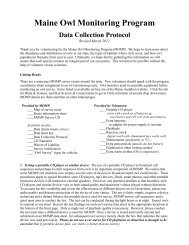Focus Species Forestry - Maine Audubon
Focus Species Forestry - Maine Audubon
Focus Species Forestry - Maine Audubon
You also want an ePaper? Increase the reach of your titles
YUMPU automatically turns print PDFs into web optimized ePapers that Google loves.
Appendix 9. Primary <strong>Focus</strong> <strong>Species</strong> for <strong>Maine</strong><br />
A short list of “primary” focus species has been identified for each region as a way to protect the greatest<br />
amount of biological diversity while managing for the fewest possible species. The species selected have<br />
one or more of the following characteristics:<br />
• Highly dependent on a narrow range of stand-development stages or special habitats,<br />
• Found in many or all of the forest ecosystem types common in the region,<br />
• Large territory size (not typically applicable for habitat specialists of late-successional forests or<br />
special-value habitats), or<br />
• Utilizes snags, cavity trees, decaying trees or downed, dead wood.<br />
The following list covers all the forest ecosystem types, development stages, and special habitats featured<br />
in this guide.<br />
Primary <strong>Focus</strong> <strong>Species</strong> for <strong>Maine</strong> 1<br />
Development Stages and<br />
Special-value Habitats<br />
Early Successional Forest<br />
Mature Forest, plus<br />
Extensive Forests, Snags,<br />
Cavity Trees, and Downed,<br />
Dead Wood<br />
Late-Successional Forest 2<br />
Riparian and Wetland<br />
Forest<br />
Vernal Pool<br />
Primary <strong>Focus</strong> <strong>Species</strong><br />
Snowshoe hare<br />
Ruffed grouse<br />
Chestnut-sided warbler<br />
American marten (north region)<br />
Fisher (south region)<br />
Northern goshawk<br />
Pileated woodpecker<br />
Lungwort lichen<br />
Gray horsehair lichen<br />
Dusky salamander<br />
Brook trout<br />
Spotted salamander<br />
1<br />
Depending on habitat types present, not all species may apply.<br />
2<br />
These species are examples only. Late successional species will vary with forest type and site.<br />
Many forest types and species groups have not been studied.<br />
Recommendations<br />
Within the range of American marten (the spruce-fir region of northern <strong>Maine</strong>), northern<br />
goshawks should be accommodated by marten management that includes both hardwood<br />
and spruce-fir stands.<br />
Where habitat fragmentation in southern and central <strong>Maine</strong> precludes the potential for<br />
nesting goshawks (forested blocks of less than 800-1,000 acres), use wood thrush as a<br />
primary focus species.<br />
If landowner interest and time allows, other “non-primary” focus species (see Section 6<br />
and Table 3) can be used to broaden the management plan and/or tailor it to the<br />
landowner’s interest. Other species not covered in this manual (e.g., wild turkey,<br />
90<br />
<strong>Focus</strong> <strong>Species</strong> <strong>Forestry</strong>



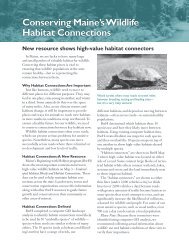
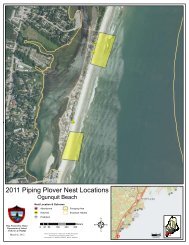
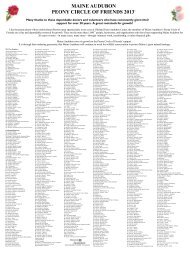
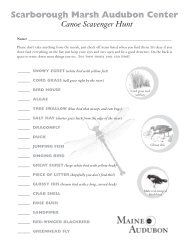


![2012 Loon Count Results [pdf] - Maine Audubon](https://img.yumpu.com/26228732/1/190x245/2012-loon-count-results-pdf-maine-audubon.jpg?quality=85)
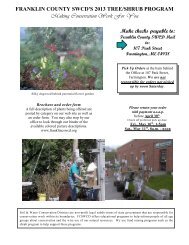
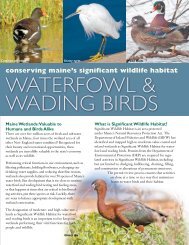
![Lake Fish of Maine (DIFW list) [pdf] - Maine Audubon](https://img.yumpu.com/23282964/1/190x245/lake-fish-of-maine-difw-list-pdf-maine-audubon.jpg?quality=85)
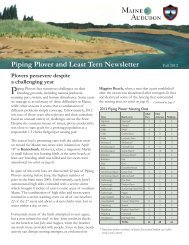

![The Maine Audubon Peony Circle of Friends 2012 [pdf]](https://img.yumpu.com/22707677/1/190x253/the-maine-audubon-peony-circle-of-friends-2012-pdf.jpg?quality=85)
